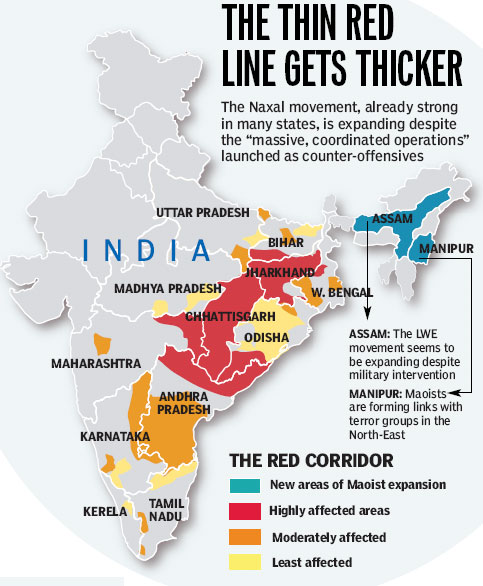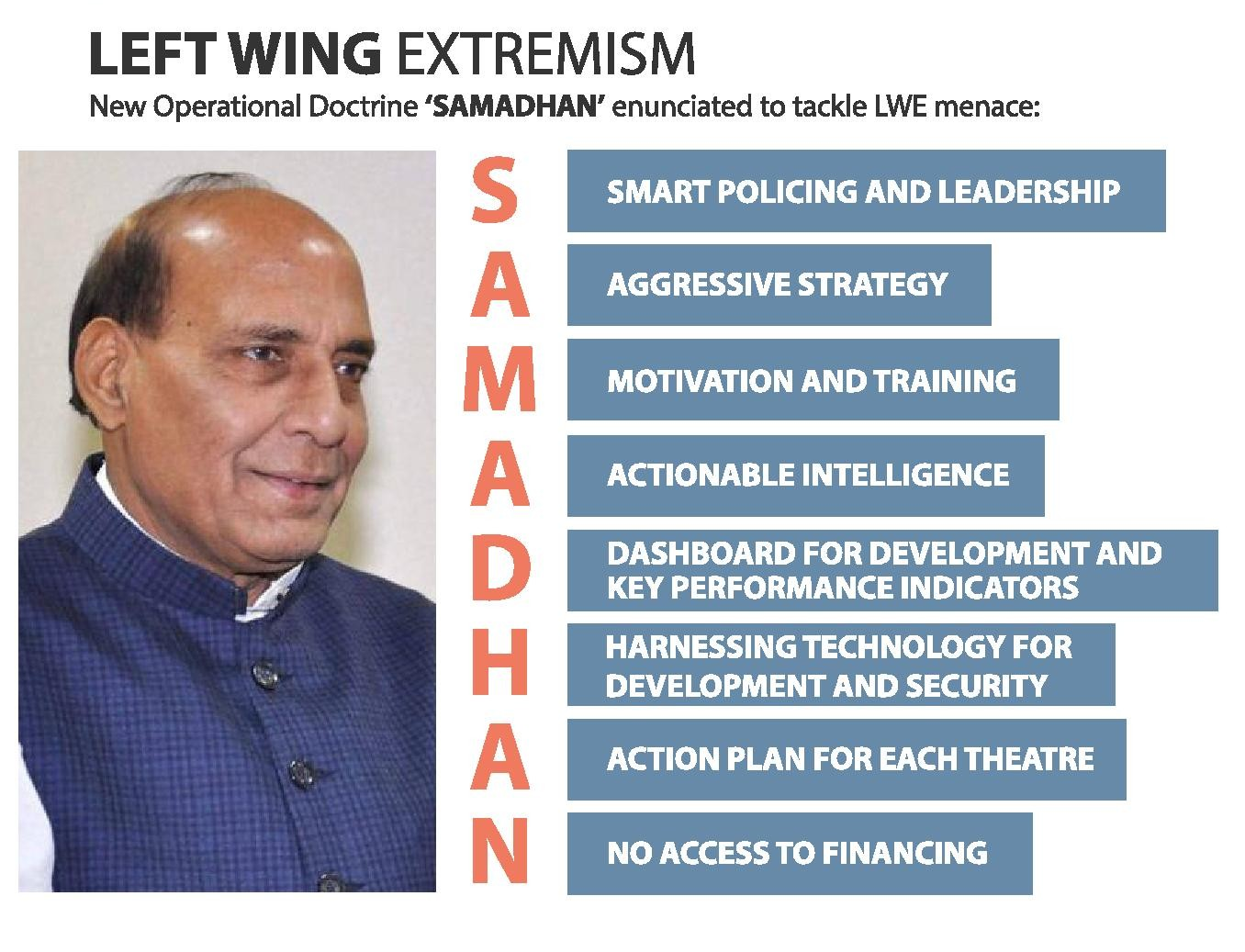



Copyright infringement not intended
Picture Courtesy: AWAZTHEVOICE
Extremism is fueled by online radicalization using social media and deepfakes, global conflicts like the Gaza situation exploited for recruitment, and the rise of varied ideological threats, from right-wing to religious and separatist movements.
Extremism is the holding of extreme political or religious views. It often involves the advocacy of sweeping changes to society in line with a belief system that asserts the superiority of one group over others.
This "us vs them" mindset is incompatible with the principles of pluralism and universal human rights. While not always violent, extremism can create a environment for violence and terrorism to flourish.
Religious Extremism
Uses religious justifications for violence and intolerance. It can involve fundamentalist interpretations of faith and tensions over territory or perceived religious competition.
Political Extremism
Categorized as far-left or far-right. Far-left extremism often aims to overthrow capitalist systems, while far-right extremism is characterized by authoritarianism, nationalism, racism, and xenophobia.
Ethnic and Sectarian Extremism
This relies on ethnicity-based politics, a sense of victimization, and hatred towards marginalized groups.
Left-Wing Extremism (LWE)
In India, this is exemplified by Maoist or Naxalite movements that challenge the state's socio-political structures through violent revolution, in tribal belts.
 What Drives Extremism in Contemporary Societies?
What Drives Extremism in Contemporary Societies?
Push Factors
Socio-economic Disparities: Lack of opportunities, unemployment, poverty, and inequality create grievances that extremist groups exploit.
Political Marginalization and Poor Governance: Perceptions of injustice, human rights violations, corruption, and exclusion from the political process fuel alienation.
Historical Grievances: Long-standing feelings of injustice or suppression can be powerful motivators for extremist ideologies.
Weak State Capacity: In areas where the state fails to provide basic services and security, non-state actors, including extremist groups, can fill the void.
Pull Factors
Ideology and Narrative: Extremist groups offer a sense of identity, purpose, and belonging to individuals who may feel disenfranchised. Their narratives distort beliefs and exploit cultural differences.
Social Networks and Leadership: Charismatic leaders and strong social networks play a crucial role in radicalizing and recruiting individuals.
Online Radicalization: The internet and social media have become powerful tools for spreading extremist propaganda and recruiting vulnerable individuals.
National Security Threats
Terrorist activities pose a direct threat to the lives of citizens and the security of the nation. Major attacks like the 2008 Mumbai attacks and the 2019 Pulwama attack highlight this vulnerability.
Economic Disruption
Violence and instability deter investment and tourism, hindering economic growth. Resources that could be used for development are diverted to security.
Social Polarization
Extremist ideologies deepen communal and ethnic divides, leading to social unrest and violence, as seen in the ethnic conflict in Manipur.
Hindrance to Development
Regions affected by long-term extremism, such as those impacted by Left-Wing Extremism, suffer from a lack of infrastructure, education, and healthcare.
Porous Borders
India's long and porous borders with neighboring countries facilitate cross-border terrorism, smuggling of arms and narcotics, and infiltration of extremist elements.
The Rise of Online Radicalization
The increasing use of encrypted communication and social media by terrorist groups for propaganda and recruitment poses a significant challenge to security agencies.
Domestic Radicalization
Socio-economic grievances, religious intolerance, and political marginalization continue to provide fertile ground for the radicalization of youth.
Fragmented Security Coordination
A lack of seamless intelligence sharing and coordination between central and state security agencies can undermine effective responses to extremist threats.
Balancing Security and Human Rights
There is a need to ensure that counter-terrorism measures do not violate fundamental rights, as such abuses can be counterproductive and fuel further extremism.
Strengthened Legal Framework
Laws like the Unlawful Activities (Prevention) Act (UAPA) and the National Investigation Agency (NIA) Act have been strengthened to enable more effective prosecution of terrorist organizations and individuals.
Intelligence Gathering and Sharing
Establishment of the National Intelligence Grid (NATGRID) aims to create a comprehensive database to aid intelligence agencies in combating terrorism.
Advanced border security
Comprehensive Integrated Border Management System (CIBMS) uses advanced technology like sensors, drones, and satellite surveillance for round-the-clock monitoring of borders.
Counter-Financing of Terrorism
A 25-point integrated plan was formulated in 2020 to curb terror funding from various sources, including narcotics and fake currency.
De-radicalization and Counter-Narratives
Ministry of Home Affairs is coordinating efforts for de-radicalization and has established an institutional framework for this purpose.
Development in affected areas
To address the root causes of extremism, particularly left-wing extremism, government has focused on infrastructure and service development in remote areas. This includes improving road and telecom connectivity, and enhancing financial inclusion.
Rehabilitation for extremists
Government has implemented surrender-cum-rehabilitation policies for extremists who give up violence. The schemes offer financial assistance, vocational training, and legal aid to help them reintegrate into society.
Community engagement
Civic action programs by security forces and media campaigns are used to build trust with local communities and counter extremist propaganda.
 Way forward to Strengthen Counter-Extremism Efforts
Way forward to Strengthen Counter-Extremism Efforts
Operational and security reforms
Modernizing forces: Upgrading equipment and capacity-building for all security forces, including state police, to tackle new threats like cyber terrorism.
Strategic deterrence: Continuing decisive and proactive military actions, coupled with economic measures, to exhaust adversaries' capacity for state-sponsored terrorism.
Improved legal framework: Strengthening laws like the UAPA and NIA Act to ensure speedy prosecution and disrupt terror financing.
Technology and intelligence
AI-driven intelligence: Using AI, big data, and predictive analytics to identify terror networks and monitor online radicalization.
Integrated databases: Expanding platforms like the National Intelligence Grid (NATGRID) for better real-time intelligence sharing between central and state agencies.
Advanced border security: Deploying AI-enabled anti-drone systems, smart fences, drones, and satellite surveillance for more effective border monitoring.
Community engagement and prevention
Targeted counter-radicalization: Implementing localized de-radicalization and rehabilitation programs that engage communities and empower local leaders.
Digital literacy: Running awareness campaigns and programs to enhance digital literacy to counter extremist propaganda online.
Root cause resolution: Continuing holistic development and socio-economic initiatives in vulnerable areas to address underlying grievances and reduce extremist influence.
Countering extremism requires combining security measures with social inclusion, education, and community engagement to address root grievances, promote resilience, and safeguard the nation’s unity, stability, and democratic values.
Source: AWAZTHEVOICE
|
PRACTICE QUESTION Q. The character of extremism is rapidly transitioning from geographical insurgencies to decentralized digital radicalization. Critically analyze. 150 words |
SAMADHAN is a strategic framework from the Ministry of Home Affairs to address Naxalism. It's an acronym representing eight key elements: Smart Leadership, Aggressive Strategy, Motivation and Training, Actionable Intelligence, Dashboard-based KPIs, Harnessing Technology, Action Plan for Each Theater, and No Access to Financing.
The SIS, a sub-scheme of the "Modernization of Police Forces," provides funds to states for strengthening security-related infrastructure. This includes strengthening State Intelligence Branches (SIBs), special forces, district police, and constructing fortified police stations in affected areas.
Launched in October 2024, the "Dharti Aaba Janjatiya Gram Utkarsh Abhiyan" is a multi-sectoral initiative aimed at accelerating development and ensuring saturation of amenities in tribal-dominated villages, many of which are in LWE-affected areas. The scheme, named in honor of tribal freedom fighter Birsa Munda, aims to bridge critical infrastructure gaps and improve services.
© 2025 iasgyan. All right reserved